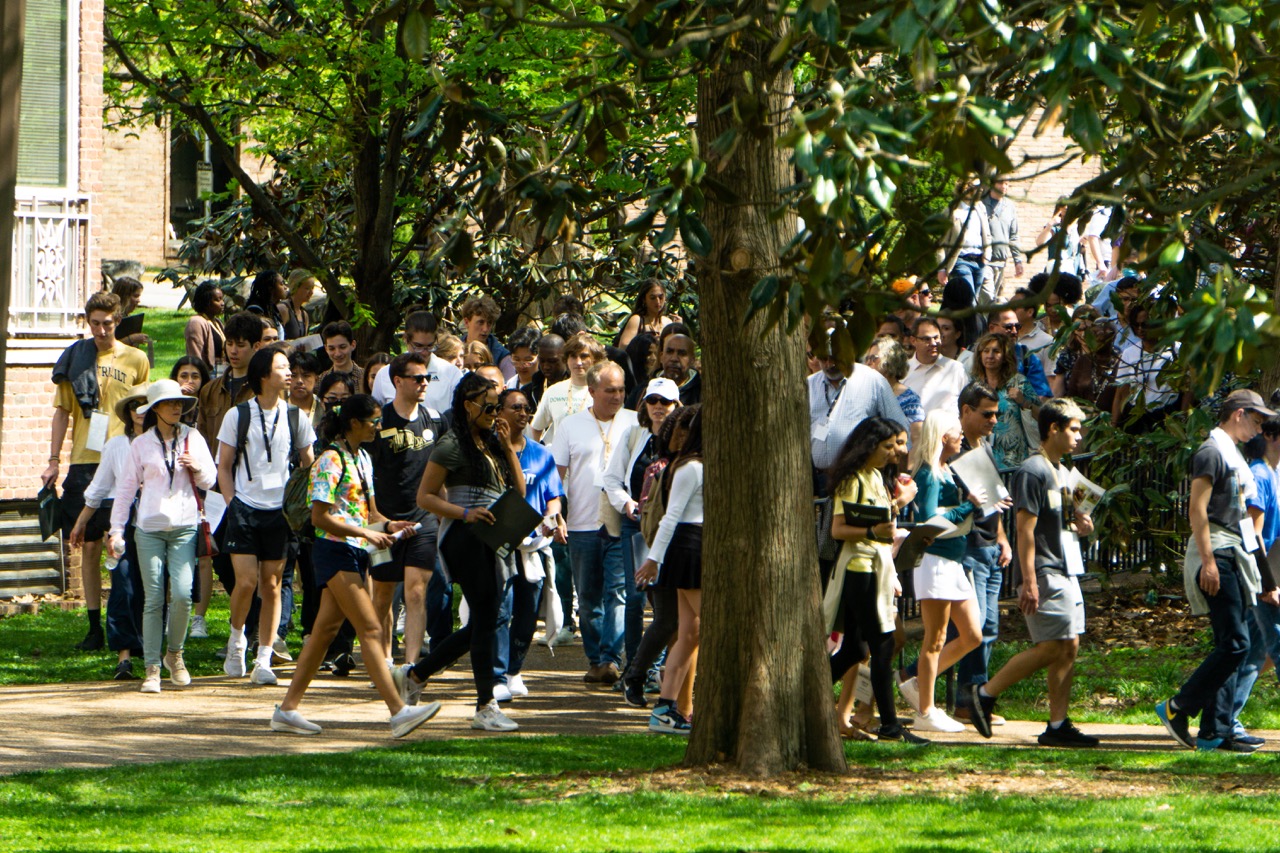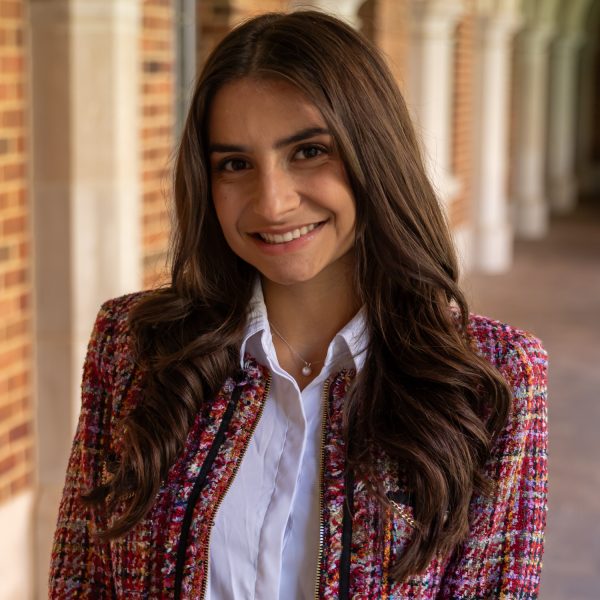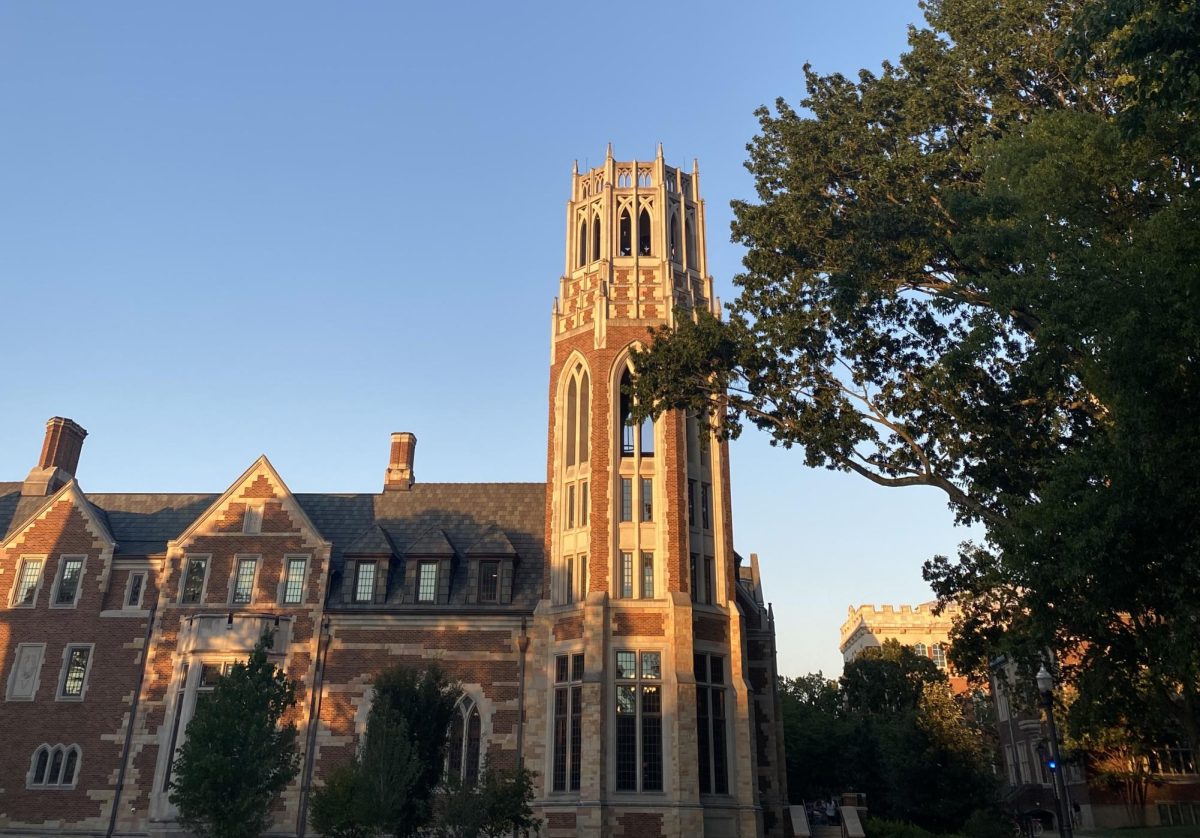Amid record-low first-year admission rates, Vanderbilt’s transfer cohort is set to increase to around 330 students this fall to “maximize [Vanderbilt’s] capacity,” according to Vice Provost for University Enrollment Affairs & Dean of Admissions and Financial Aid Doug Christiansen. This enrolled transfer class will be 18% larger than Fall 2023 and around 41% larger than Fall 2022 and 2021 — the largest transfer cohort in the past 10 years, before which public data is unavailable.
Christiansen said rising admitted transfer student yield rates and more admitted transfer students will cause this increase.
Reasoning for change
Christiansen clarified that transfer admission is not related to first-year retention — which sits at 97% — but rather space at the university partially due to December graduates and Vanderbilt’s high student study abroad rate. Vanderbilt's overall enrollment spiked during the 2020-21 academic year after being relatively stagnant for the prior six years.
The University Registrar stated that recent year-to-year changes in December graduation rates are insignificant.
Vanderbilt’s study abroad rates for the past two years have well exceeded pre-COVID-19 rates, a trend not consistent nationally. They also rebounded 1.27 times faster than the national average after the COVID-19 pandemic with study abroad rates in the 2021-22 academic year returning to 70% of pre-pandemic levels. During the 2021-22 academic year, 5.90% of U.S. undergraduates studied abroad, compared to 6.53% of Vanderbilt undergraduates.
During the 2023-24 academic year, 937 — 13.10% — of degree-seeking undergraduates studied abroad, the most students in Vanderbilt history. The Vanderbilt Global Education Office said the total number of available study abroad programs post-COVID-19 is comparable to pre-COVID-19. It did not respond to The Hustler’s request for comment about whether it has marketed study abroad programs more rigorously post-COVID-19.
“We have some capacity in the classroom, in the residence halls [and] in the dining facilities,” Christiansen said. “And as we think about the demand for a Vanderbilt degree becoming so much greater, we see the [first-year] admit rate keep going down and demand for transfer students keeps going up.”
Regarding choosing to fill this capacity with transfer students, Christiansen emphasized the diversity that transfer students add to Vanderbilt and their comparable academic success to non-transfer students.
“They bring a sense of maturity to the campus of experience of something else,” Christiansen said. “They are highly talented.”
Senior Grace Knor, president of Vanderbilt Transfer Connect, declined to comment on how Transfer Connect is preparing for the increase in cohort size until more information becomes available.
Vanderbilt transfer admission trends
Although Christiansen attributed the increased size of the Fall 2024 transfer cohort partially to rising yield rates of admitted transfer students, the yield rates for the Fall 2023 and Fall 2022 transfer cohorts are among the lowest in the past 10 years. Throughout this time, the yield rate has hovered around 50%, ranging from 48-58%.
Among peer institutions, Vanderbilt had the lowest transfer yield rate for the Fall 2023 cohort.
School size and number of admitted transfer applicants are not always proportional. Dartmouth College’s undergraduate population is around half of the University of Notre Dame’s and a little more than half of Vanderbilt’s, but the school only accepted 12 transfer students, compared to 533 and 280 at Notre Dame and Vanderbilt, respectively. Likewise, the University of Michigan-Ann Arbor, the University of California-Berkeley and the University of California-Los Angeles have similar undergraduate student body sizes, but UCLA admitted around 4,000 more transfer students than UC-Berkeley and Michigan.
Applicants for transfer admission at Vanderbilt have increased over the past 10 years, a pattern inconsistent among peer institutions. Compared to peer private institutions, significantly more students applied to transfer to Vanderbilt in recent years.
Vanderbilt transfer admission process
Christiansen said the first of three transfer admission decision waves was released this past week. He explained that the timing of an applicant’s decision being made is related to multiple factors, including the date of application submission and completion as well as admission staff availability. The second and third waves of decisions will come toward the beginning of June and July, respectively.
The “vast majority” of applicants intend to enter as first-semester sophomores and have an existing relationship with Vanderbilt, such as being a former applicant or former prospective student, Christiansen said. More transfer students apply to the College of Arts and Science than other undergraduate schools, a pattern Christiansen attributed to the broader offerings of A&S compared to more specific requirements in the other schools.
“It’s easier for a transfer student to come in and take the credits they have and match them [in A&S] so that they can still be done in four years,” Christiansen said.














